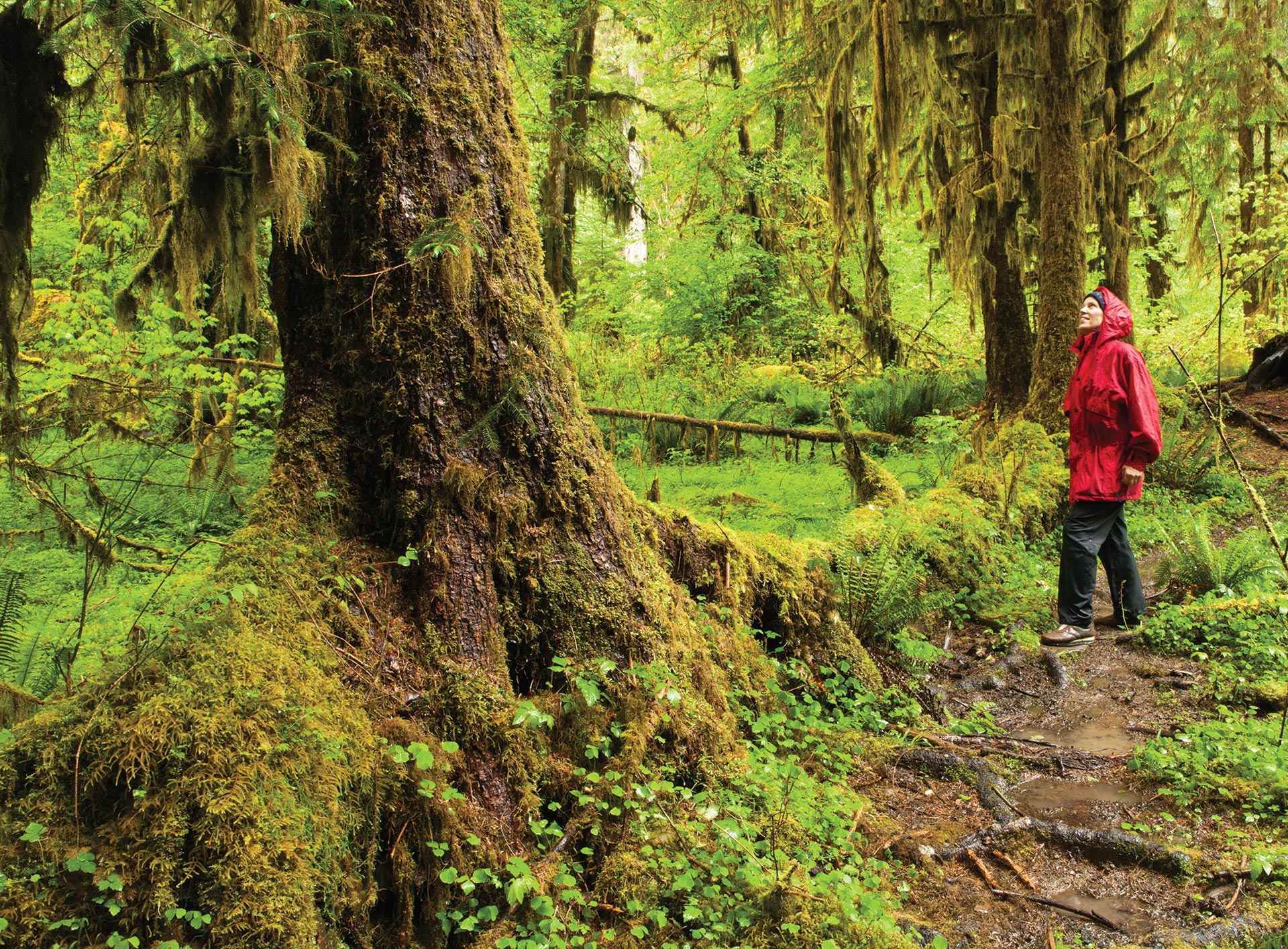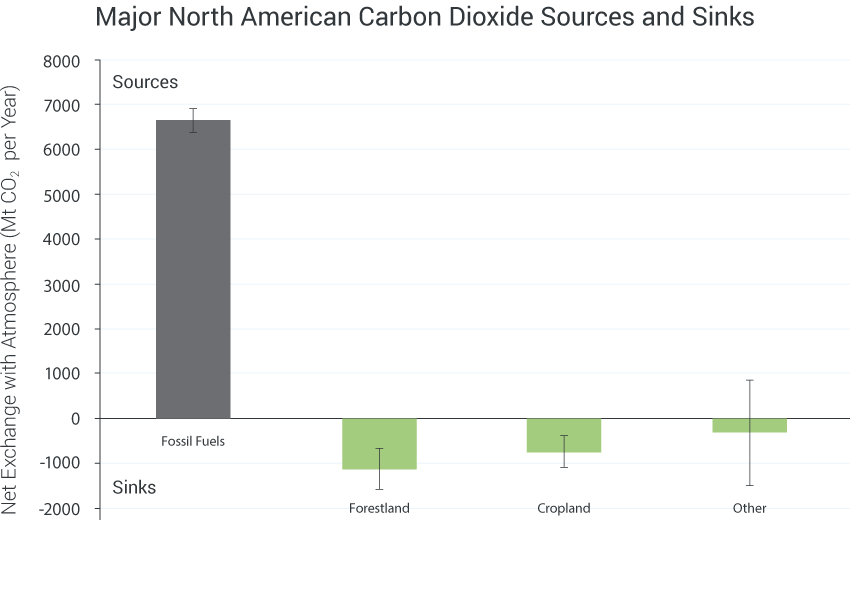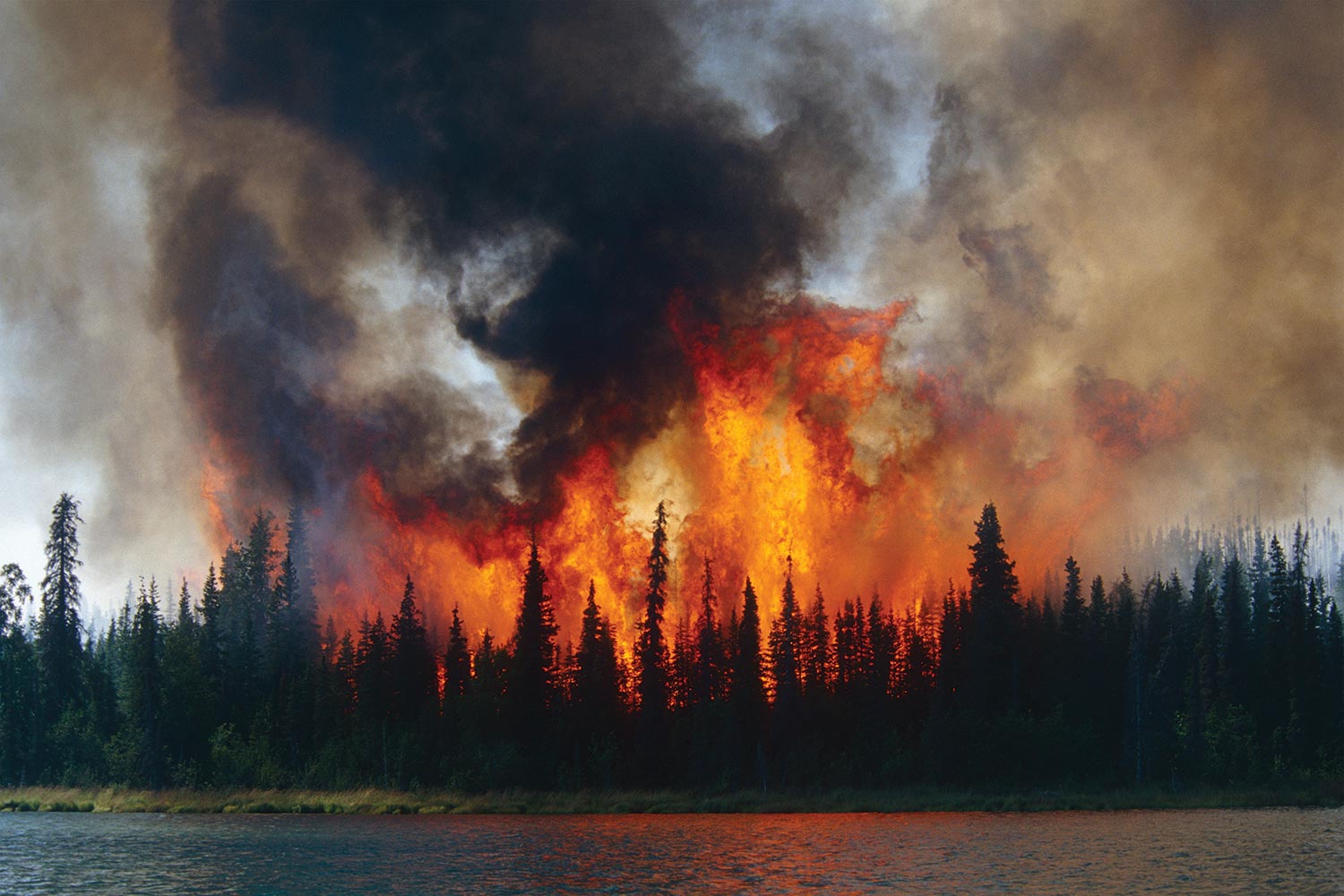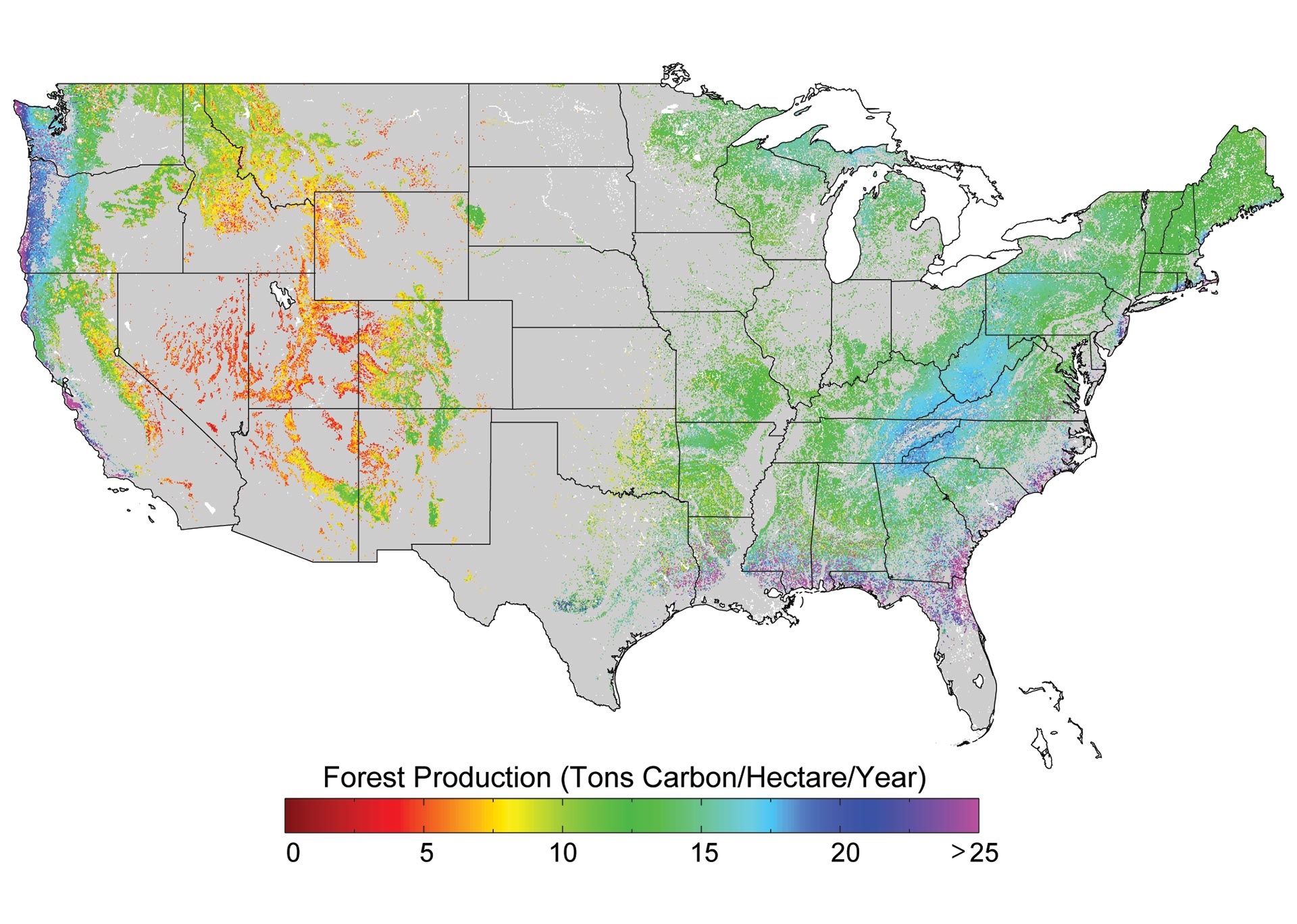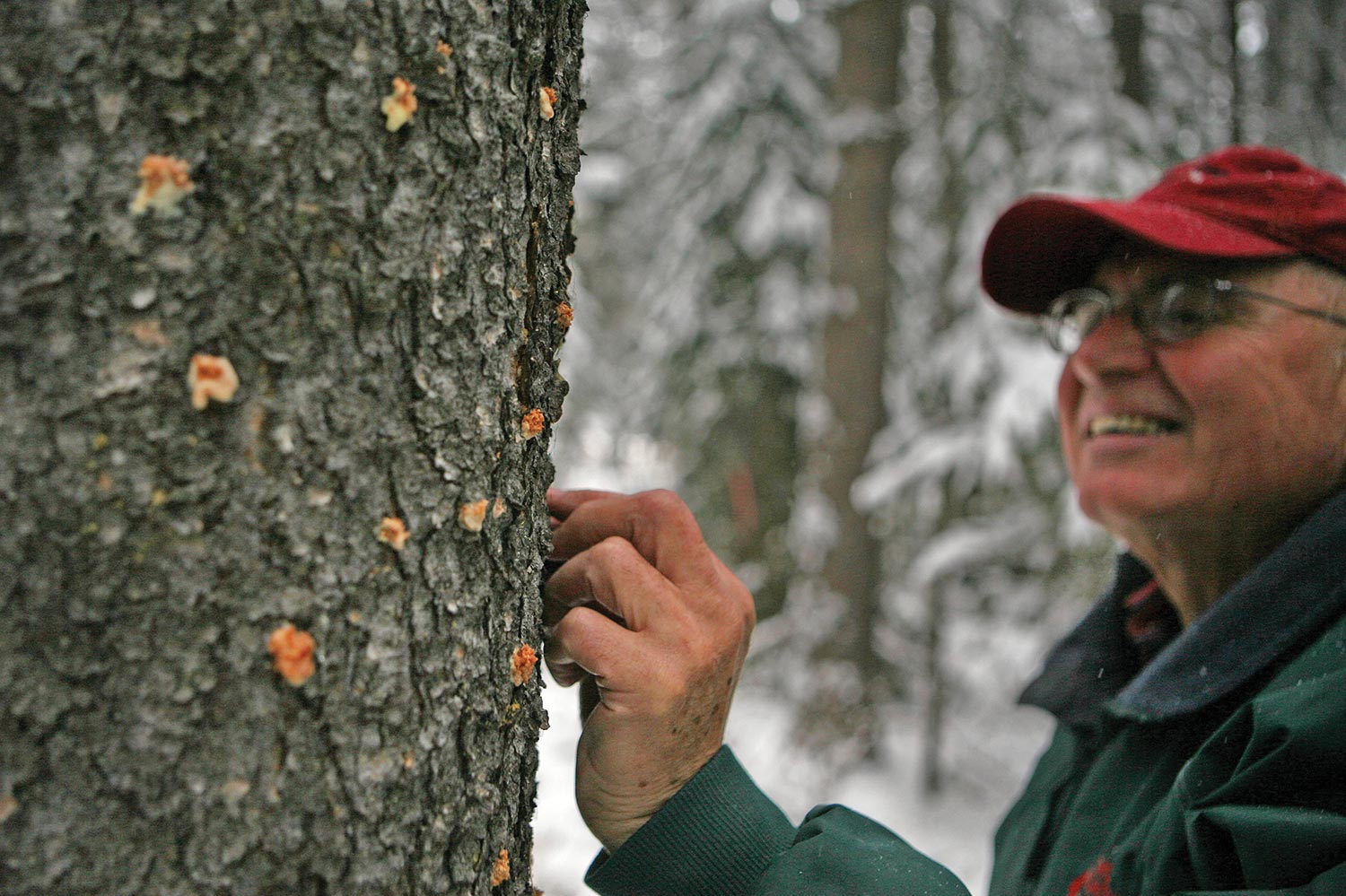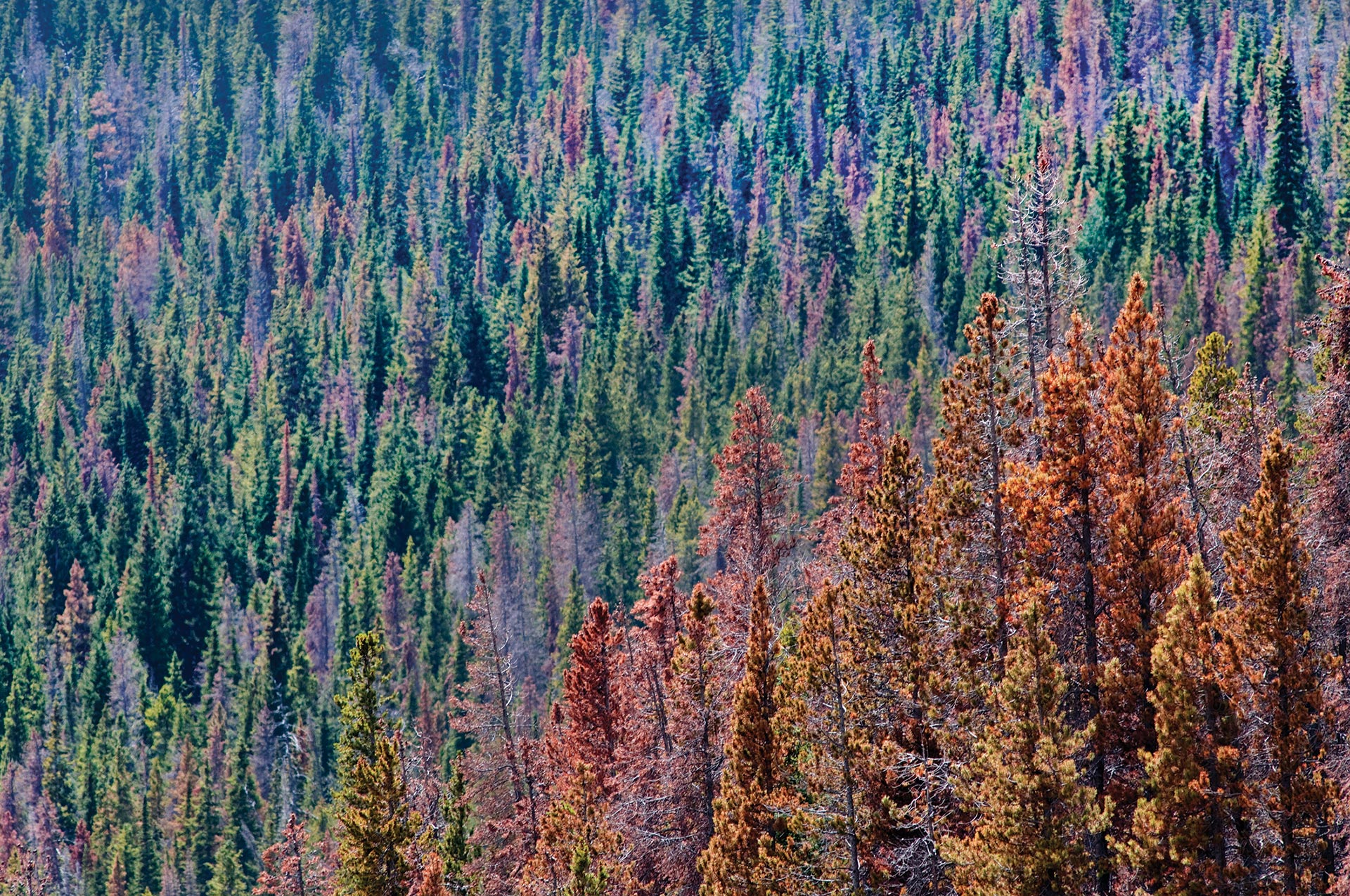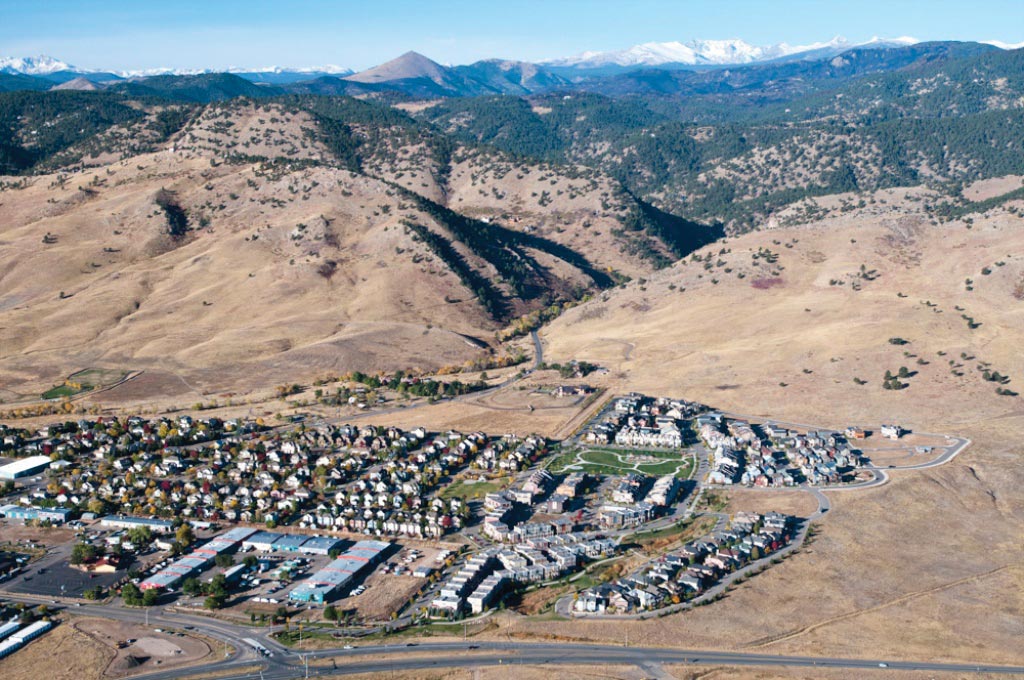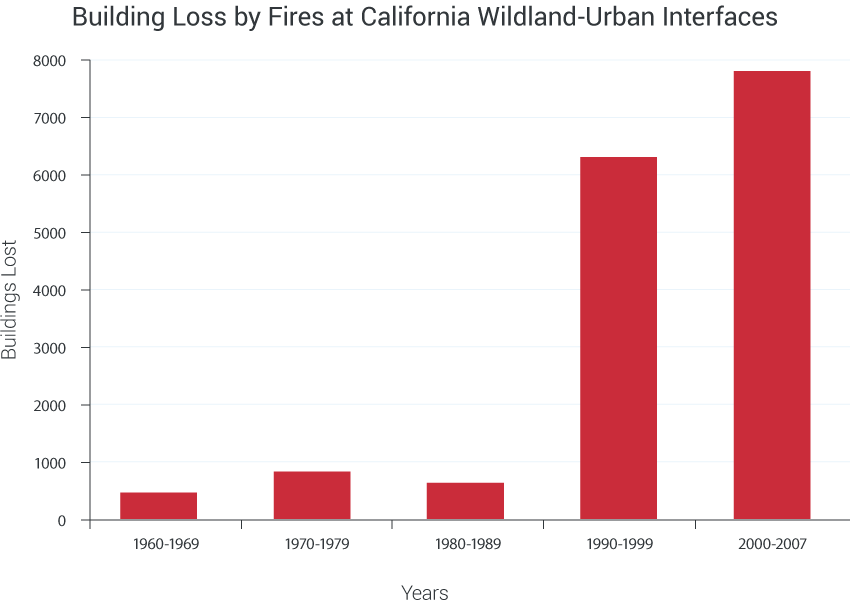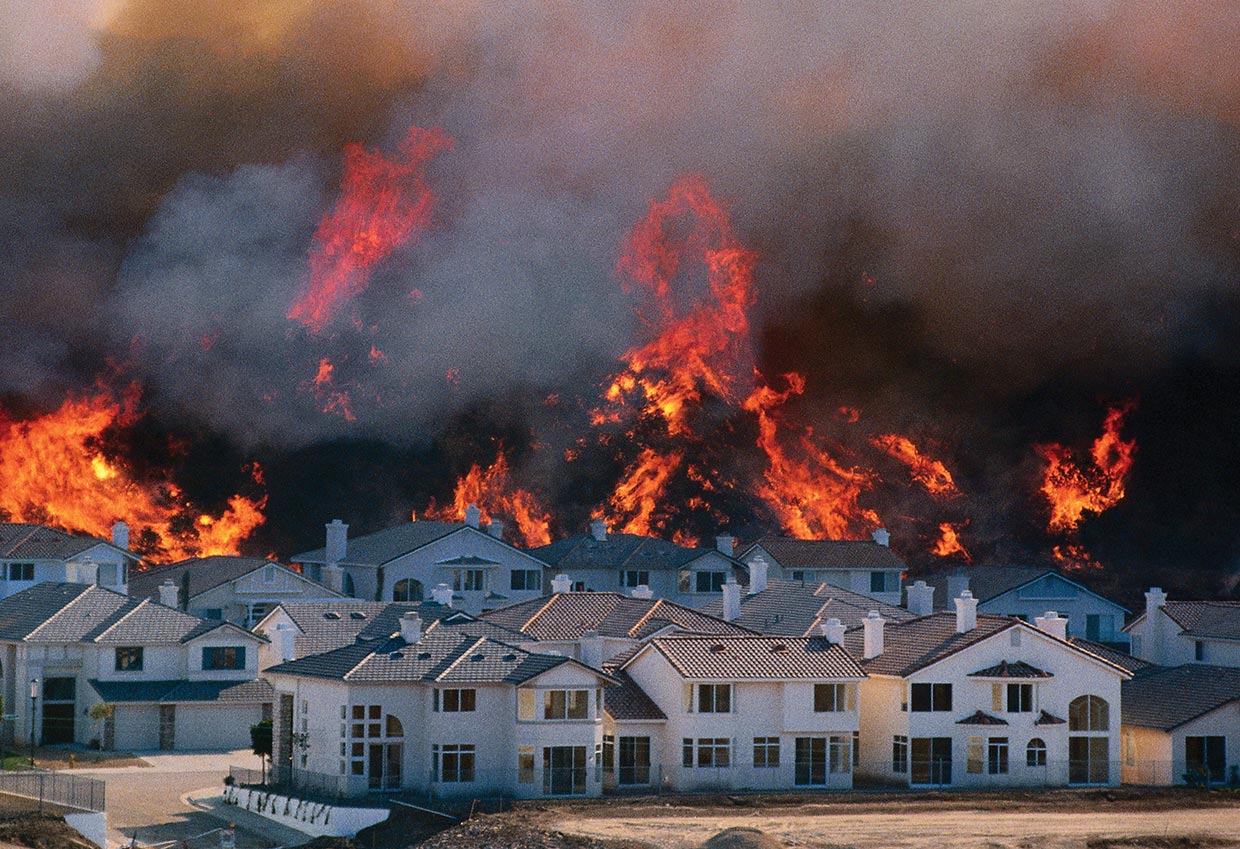1
Mussel and barnacle beds have declined or disappeared along parts of the Northwest coast due to higher temperatures and drier conditions that have compressed habitable intertidal space.
2
Northern flickers arrived at breeding sites earlier in the Northwest in response to temperature changes along migration routes, and egg laying advanced by 1.15 days for every degree increase in temperature, demonstrating that this species has the capacity to adjust their phenology in response to climate change.
3
Conifers in many western forests have experienced mortality rates of up to 87% from warming-induced changes in the prevalence of pests and pathogens and stress from drought.
4
Butterflies that have adapted to specific oak species have not been able to colonize new tree species when climate change-induced tree migration changes local forest types, potentially hindering adaptation.
5
In response to climate-related habitat change, many small mammal species have altered their elevation ranges, with lower-elevation species expanding their ranges and higher-elevation species contracting their ranges.
6
Northern spotted owl populations in Arizona and New Mexico are projected to decline during the next century and are at high risk for extinction due to hotter, drier conditions, while the southern California population is not projected to be sensitive to future climatic changes.
7
Quaking aspen-dominated systems are experiencing declines in the western U.S. after stress due to climate-induced drought conditions during the last decade.
8
Warmer and drier conditions during the early growing season in high-elevation habitats in Colorado are disrupting the timing of various flowering patterns, with potential impacts on many important plant-pollinator relationships.
9
Population fragmentation of wolverines in the northern Cascades and Rocky Mountains is expected to increase as spring snow cover retreats over the coming century.
10
Cutthroat trout populations in the western U.S. are projected to decline by up to 58%, and total trout habitat in the same region is projected to decline by 47%, due to increasing temperatures, seasonal shifts in precipitation, and negative interactions with non-native species.
11
Comparisons of historical and recent first flowering dates for 178 plant species from North Dakota showed significant shifts occurred in over 40% of species examined, with the greatest changes observed during the two warmest years of the study.
12
Variation in the timing and magnitude of precipitation due to climate change was found to decrease the nutritional quality of grasses, and consequently reduce weight gain of bison in the Konza Prairie in Kansas and the Tallgrass Prairie Preserve in Oklahoma. Results provide insight into how climate change will affect grazer population dynamics in the future.
13a
Climatic fluctuations were found to influence mate selection and increase the probability of infidelity in birds that are normally socially monogamous, increasing the gene exchange and the likelihood of offspring survival.
13b
Climatic fluctuations were found to influence mate selection and increase the probability of infidelity in birds that are normally socially monogamous, increasing the gene exchange and the likelihood of offspring survival.
14
Migratory birds monitored in Minnesota over a 40-year period showed significantly earlier arrival dates, particularly in short-distance migrants, indicating that some species are capable of responding to increasing winter temperatures better than others.
15
Up to 50% turnover in amphibian species is projected in the eastern U.S. by 2100, including the northern leopard frog, which is projected to experience poleward and elevational range shifts in response to climatic changes in the latter quarter of the century.
16
Studies of black ratsnake (Elaphe obsoleta) populations at different latitudes in Canada, Illinois, and Texas suggest that snake populations, particularly in the northern part of their range, could benefit from rising temperatures if there are no negative impacts on their habitat and prey.
17
Warming-induced hybridization was detected between southern and northern flying squirrels in the Great Lakes region of Ontario, Canada, and in Pennsylvania after a series of warm winters created more overlap in their habitat range, potentially acting to increase population persistence under climate change.
18
Some warm-water fishes have moved northwards, and some tropical and subtropical fishes in the northern Gulf of Mexico have increased in temperate ocean habitat. Similar shifts and invasions have been documented in Long Island Sound and Narragansett Bay in the Atlantic.
19
Global marine mammal diversity is projected to decline at lower latitudes and increase at higher latitudes due to changes in temperatures and sea ice, with complete loss of optimal habitat for as many as 11 species by mid-century; seal populations living in tropical and temperate waters are particularly at risk to future declines.
20
Higher nighttime temperatures and cumulative seasonal rainfalls were correlated with changes in the arrival times of amphibians to wetland breeding sites in South Carolina over a 30-year time period (1978-2008).
21
Seedling survival of nearly 20 resident and migrant tree species decreased during years of lower rainfall in the Southern Appalachians and the Piedmont areas, indicating that reductions in native species and limited replacement by invading species were likely under climate change.
22
Widespread declines in body size of resident and migrant birds at a bird-banding station in western Pennsylvania were documented over a 40-year period; body sizes of breeding adults were negatively correlated with mean regional temperatures from the preceding year.
23
Over the last 130 years (1880-2010), native bees have advanced their spring arrival in the northeastern U.S. by an average of 10 days, primarily due to increased warming. Plants have also showed a trend of earlier blooming, thus helping preserve the synchrony in timing between plants and pollinators.
24
In the Northwest Atlantic, 24 out of 36 commercially exploited fish stocks showed significant range (latitudinal and depth) shifts between 1968 and 2007 in response to increased sea surface and bottom temperatures.
25
Increases in maximum, and decreases in the annual variability of, sea surface temperatures in the North Atlantic Ocean have promoted growth of small phytoplankton and led to a reorganization in the species composition of primary (phytoplankton) and secondary (zooplankton) producers.
26
Changes in female polar bear reproductive success (decreased litter mass and numbers of yearlings) along the north Alaska coast have been linked to changes in body size and/or body condition following years with lower availability of optimal sea ice habitat.
27
Water temperature data and observations of migration behaviors over a 34-year time period showed that adult pink salmon migrated earlier into Alaskan creeks, and fry advanced the timing of migration out to sea. Shifts in migration timing may increase the potential for a mismatch in optimal environmental conditions for early life stages, and continued warming trends will likely increase pre-spawning mortality and egg mortality rates.
28
Warmer springs in Alaska have caused earlier onset of plant emergence, and decreased spatial variation in growth and availability of forage to breeding caribou. This ultimately reduced calving success in caribou populations.
29
Many Hawaiian mountain vegetation types were found to vary in their sensitivity to changes in moisture availability; consequently, climate change will likely influence elevation-related vegetation patterns in this region.
30
Sea level is predicted to rise by 1.6 to 3.3 feet in Hawaiian waters by 2100, consistent with global projections of 1 to 4 feet of sea level rise (see Ch. 2: Our Changing Climate, Key Message 10). This is projected to increase wave heights, the duration of turbidity, and the amount of re-suspended sediment in the water; consequently, this will create potentially stressful conditions for coral reef communities. ,,














